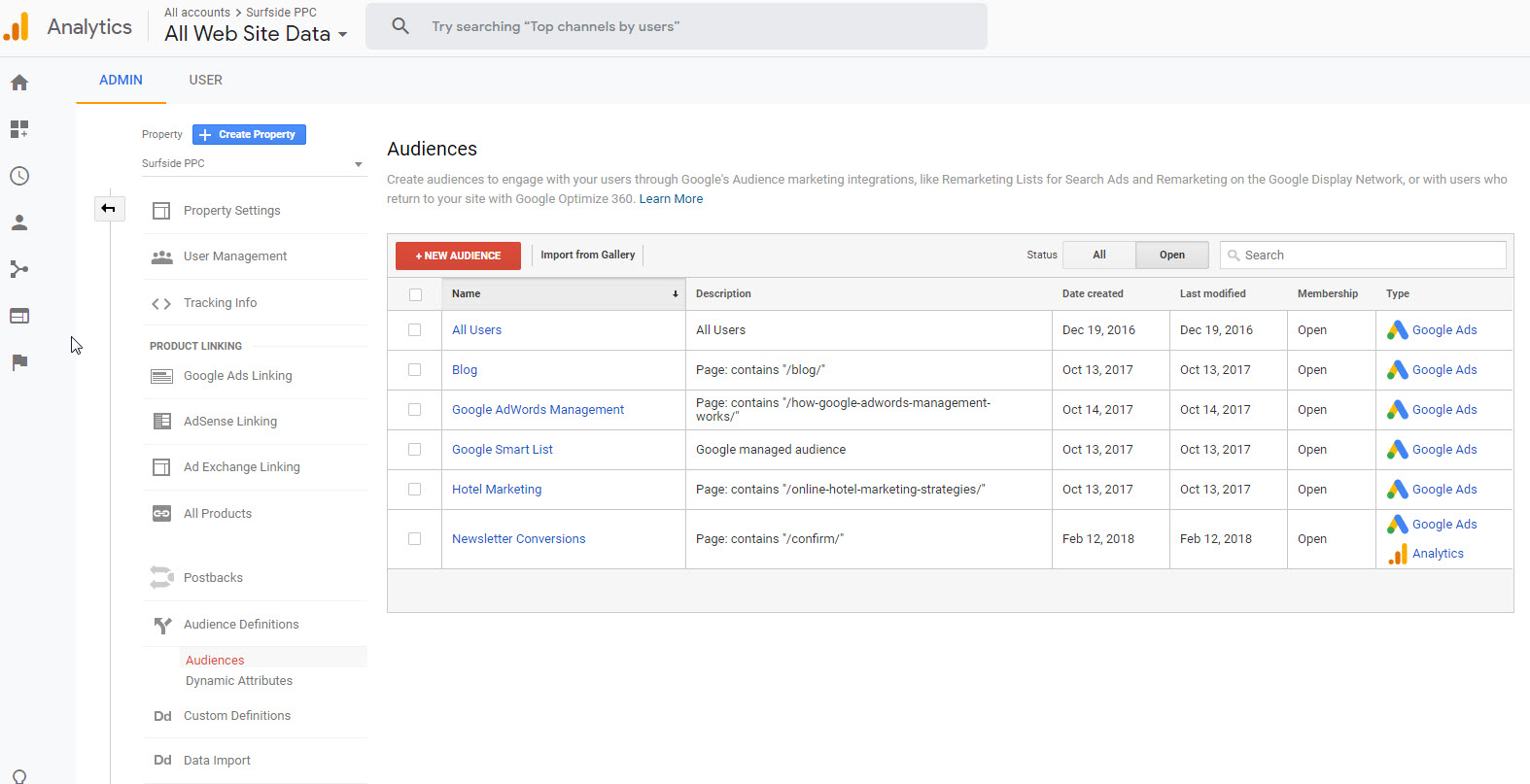Taking Advantage Of Remarketing in Google Analytics: A Comprehensive Overview
Using remarketing in Google Analytics provides businesses a critical side in getting to out to potential customers. This overview will certainly drop light on the important actions entailed in utilizing the complete potential of remarketing in Google Analytics, leading to boosted marketing end results.
Recognizing Remarketing in Google Analytics
Remarketing in Google Analytics enables businesses to purposefully target individuals who have actually previously interacted with their internet site or mobile application. By leveraging data from Google Analytics, organizations can create personalized remarketing lists based on individual behavior, such as web pages gone to, activities taken, or specific objectives achieved. This effective device enables organizations to re-engage with individuals that have shown interest in their service or products, inevitably increasing the chance of conversion.
Understanding the different kinds of remarketing techniques is crucial for an effective project - What Is “Remarketing” In Google Analytics?. Google Analytics provides numerous options, consisting of standard remarketing, dynamic remarketing, and remarketing listings for search advertisements (RLSA) Each kind offers an unique function and can be customized to meet certain advertising and marketing objectives
Furthermore, analyzing the performance of remarketing campaigns is crucial for optimizing results. Google Analytics supplies valuable understandings right into the effectiveness of different remarketing techniques, enabling companies to make data-driven decisions and refine their targeting approach. By continuously checking and readjusting remarketing efforts based upon analytics information, companies can make best use of ROI and drive success in their advertising and marketing efforts.
Establishing Remarketing Campaigns

After establishing audience listings, the next step is to connect Google Analytics with Google Ads. By linking these 2 platforms, businesses can seamlessly move audience lists from Google Analytics to Google Advertisements for remarketing purposes. This assimilation enables for more specific targeting and much better campaign efficiency.
Once the accounts are connected, companies can develop remarketing campaigns in Google Advertisements using the target market provides previously defined in Google Analytics. These campaigns can be personalized with specific ad creatives, messaging, and bidding process techniques to effectively re-engage with past visitors and drive conversions. By adhering to these actions, organizations can utilize the power of remarketing to improve their advertising initiatives and boost ROI.
Utilizing Target Market Division Techniques

Predefined segments in Google Analytics enable you to promptly analyze usual audience categories like brand-new customers, returning individuals, or individuals that completed a particular goal on your web site. Personalized segments, on the various other hand, allow you to create distinct sections based on specific criteria that are necessary to your business purposes. Dynamic remarketing checklists instantly readjust based upon customer behavior, showing personalized ads to individuals that have actually connected with your website particularly ways.
Studying Remarketing Performance Metrics
Upon reviewing the effectiveness of remarketing campaigns in Google Analytics, the analysis of key performance metrics offers important insights into target market engagement and conversion prices. By diving right into metrics such as click-through rates (CTR), conversion prices, price per purchase (CERTIFIED PUBLIC ACCOUNTANT), and return on ad invest (ROAS), marketing useful link professionals can assess the success of their remarketing efforts. CTR indicates the percentage of customers that clicked on the advertisement after seeing it, reflecting the ad's significance and appeal. Conversion rates measure the percent of customers who completed a wanted action, such as buying, after clicking on the advertisement. CPA discloses the typical expense sustained for every conversion, helping assess project profitability. ROAS, on the various other hand, measures the revenue created for every single buck spent on marketing. Evaluating these metrics allows marketers to maximize campaigns, improve audience targeting, and allocate budget plans efficiently to boost general remarketing efficiency.
Optimizing Remarketing Methods
When refining remarketing approaches in Google Analytics, concentrating on audience division is paramount for accomplishing project success. By dividing your audience right into particular sectors based upon their behavior, demographics, or passions, you can tailor your advertisements better to every team. This targeted technique increases the chance of engaging customers who have actually currently revealed interest in your services or products, bring about higher conversion prices.
Another important element of maximizing remarketing techniques is continually testing and refining your projects (What Is “Remarketing” In Google Analytics?). A/B testing various ad creatives, messaging, or deals can help you determine what resonates finest with your target market and drives the most conversions. By examining the performance of these examinations in Google Analytics, click to investigate you can make data-driven choices to optimize your remarketing efforts even more
Furthermore, leveraging dynamic remarketing can considerably boost your project results. This attribute permits you to show tailored advertisements to customers based on their past interactions with your website, showcasing product and services they have actually formerly watched. By providing customized web content to users based on their rate of interests and actions, dynamic remarketing can aid enhance interaction and drive conversions.
Verdict
In final thought, using remarketing in Google Analytics is a calculated approach to target users that have previously involved with a website. By creating tailored target Check Out Your URL market lists and using target market segmentation strategies, services can optimize remarketing advocate increased conversion prices. Evaluating performance metrics and continually optimizing techniques are critical for making the most of the performance of remarketing efforts.
Google Analytics uses different options, consisting of typical remarketing, vibrant remarketing, and remarketing lists for search advertisements (RLSA)After setting up audience checklists, the next step is to link Google Analytics with Google Ads. By connecting these 2 platforms, services can seamlessly move target market lists from Google Analytics to Google Ads for remarketing purposes.When the accounts are connected, organizations can create remarketing projects in Google Advertisements making use of the audience provides formerly specified in Google Analytics.When refining remarketing techniques in Google Analytics, concentrating on audience segmentation is extremely important for achieving campaign success.